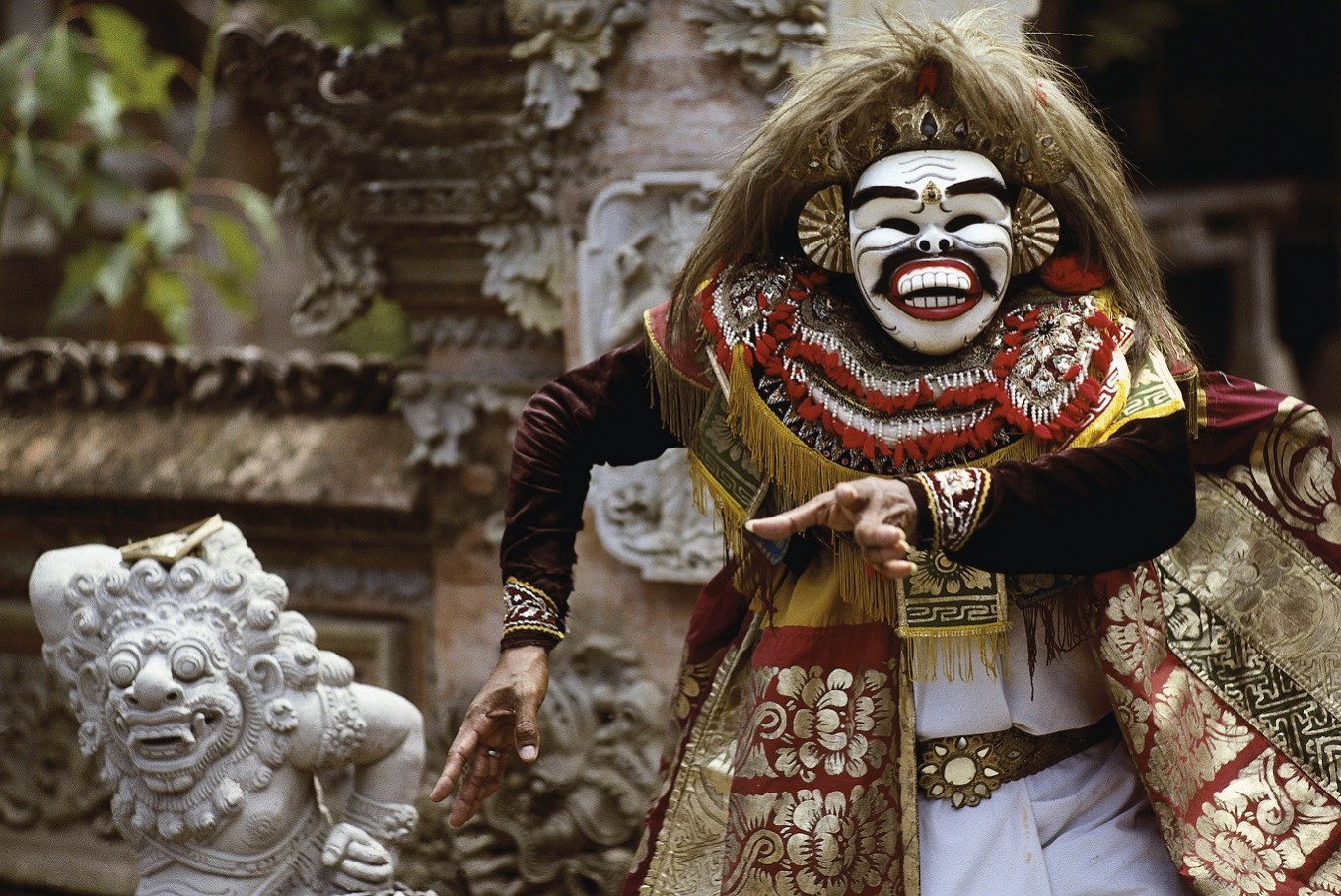Popular Reads
Top Results
Can't find what you're looking for?
View all search resultsPopular Reads
Top Results
Can't find what you're looking for?
View all search resultsPhotographer Bernard Grismayer captures religious ceremonies
Born in 1948, Grismayer is a photographer of religious pilgrimages, mainly in India, but also in Bali. He completed a graphic arts course at the famous Estienne Art School in Paris instead of attending the last three years of regular French high school (SMA/baccalaureat).
Change text size
Gift Premium Articles
to Anyone
In late December, we attended the opening of Bernard Grismayer’s photo exhibition at Galerie Impressions in Paris.
The photos were taken mainly in Hampi, Karnataka, India, where the temples of the Vijayanagara (Hindu) dynasty can still be admired. We had visited the location ten years ago with our young daughter, so it brought back sweet memories of the magnificent historical site, and unfortunately also of swarms of mosquitos.
Born in 1948, Grismayer is a photographer of religious pilgrimages, mainly in India, but also in Bali. He completed a graphic arts course at the famous Estienne Art School in Paris instead of attending the last three years of regular French high school (SMA/baccalaureat).
Grismayer learnt photogravure techniques for printing, including helio-gravure that produces wonderfully clear images for art books. The three-year apprenticeship initiated Bernard into state of the art photography. His teachers were experienced professionals in the art of printing.
Read also: Five recommended websites for photography portfolios
At that time, typography professionals, according to Grismayer, were guaranteed excellent salaries. They were a closed league of about 2,500 members, not yet swallowed by computerization in printing newspapers and magazines for example. Graduates and apprentices were quickly snapped up by huge firms like Marquan & Muguet to begin their professional careers.
Meanwhile, the young Parisian had already begun hitch-hiking around Europe, mainly to Scandinavia, where he used an old box camera to capture his surroundings, setting the pattern for the next few years. Bernard knew that he could easily find a job when he came back, earning a salary equivalent to 2,000 euros (US$2,136) after tax today. This enabled him to save money for traveling. In the early 1960s that amount was more than adequate to enjoy a decent living at home.
Grismayer began to travel further afield. He took a plane to Mexico and Central America, reaching Colombia overland in 1969. Soon he tired of being stamped as a gringo. His money ran out, because the foreign exchange coupons for French citizens traveling abroad were no longer permitted. His parents, family and friends could no longer send him their unused exchange coupons for buying foreign currency on the spot. Back in Panama, he persuaded his mother to send him bank notes hidden between carbon paper. The young traveler returned to France to work to pay of his debts and set off on another trip.
Read also: Corruption tour shines unflattering light on graft in Mexico
The first trips to India were by hitch-hiking overland, literally beginning at Porte d’Orleans in the outskirts of Paris, traversing the Balkans, Turkey, Afghanistan and Pakistan. Later he took a plane when political upheaval prevented him from passing through troubled areas. He had already been to Burma and Cambodia, roaming the temples at Bagan and Angkor before the onslaught of tourism, but he was particularly fascinated by the multiple facets of life on the Indian subcontinent.
Of course, Grismayer lived on the cheap while it was still possible. His boss at work sold him a Rolleiflex and a Pentax at a discount, which he paid back in instalments. Unfortunately, his Rolleiflex was used by an Indian friend who failed to give it back to him. Anyway, Bernard pressed on and developed the negatives and prints himself when he arrived back home. This way, he financed his earlier journeys, bringing back a large catch of film rolls. After a photo exhibition, Grismayer usually sells colour or black-and-white prints of his work.
On the first of his trips to India, Bernard managed to travel right up to the source of the Ganges at Rishikesh, where he encountered sadhus (Indian religious hermits), which fascinated him. Grismayer began documenting other religious piligrimages every year, and later flew to Bali to follow up and compare the Hindu customs there. He became fascinated with topeng theater and dance during religious rituals. In Bali, he usually stayed with dancers or dalangs in their village, like I Made Djimat in Batuan and I Gusti Ngurah Windia in Carangsari, as he did in India.
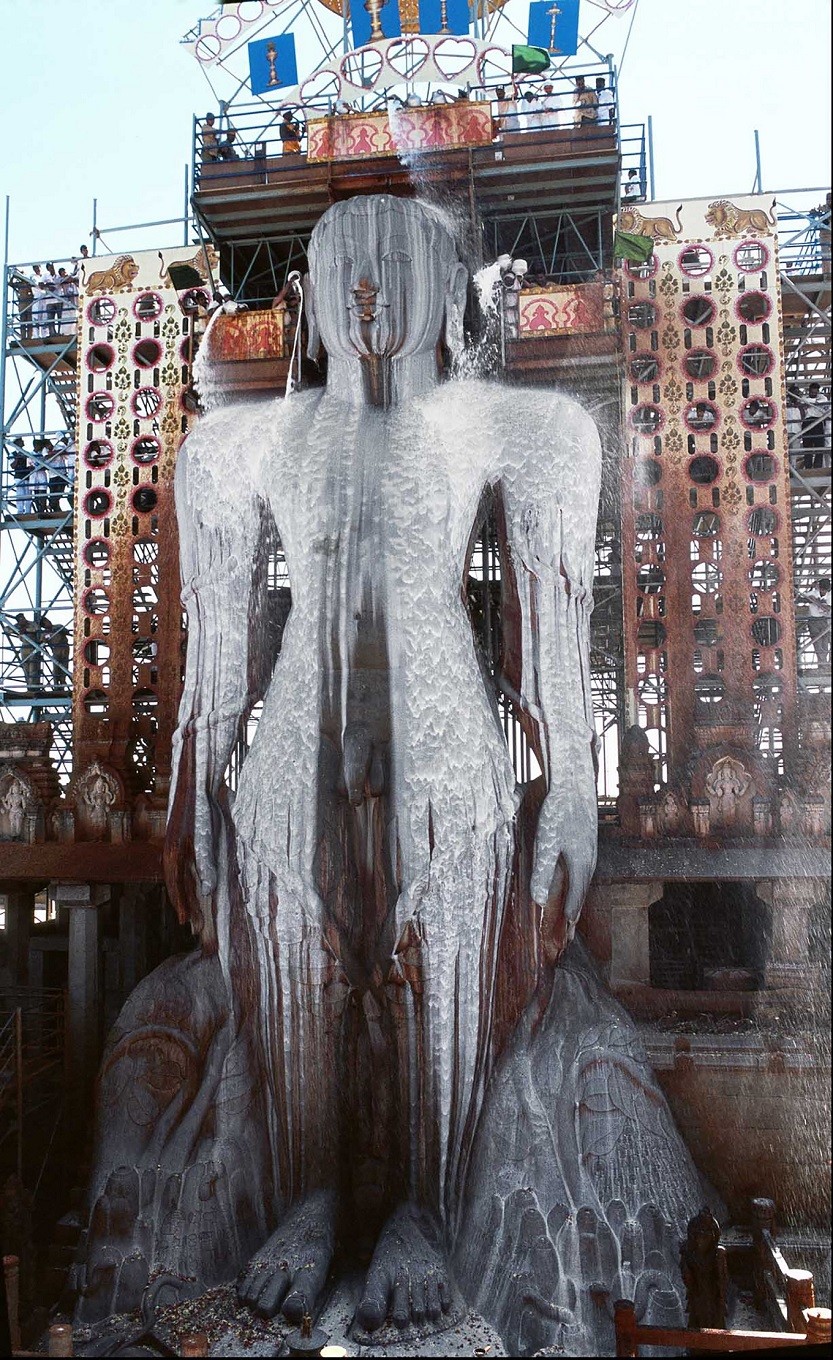 Giant granite Bahubali statue with devotees pouring liters of milk over it in veneration during the Shravanabelagola.(Bernard Grismayer/Bernard Grismayer)
Giant granite Bahubali statue with devotees pouring liters of milk over it in veneration during the Shravanabelagola.(Bernard Grismayer/Bernard Grismayer)
In India, Bernard followed the Jain community worshipping the Jain Hermit King Gomateshvara, also called Bahubali, represented by an imposing giant granite statue. This takes place during the Mahamastakhabhiseka at Shravanabelagola-Belagola, in the district of Hassan in the state of Karnataka.
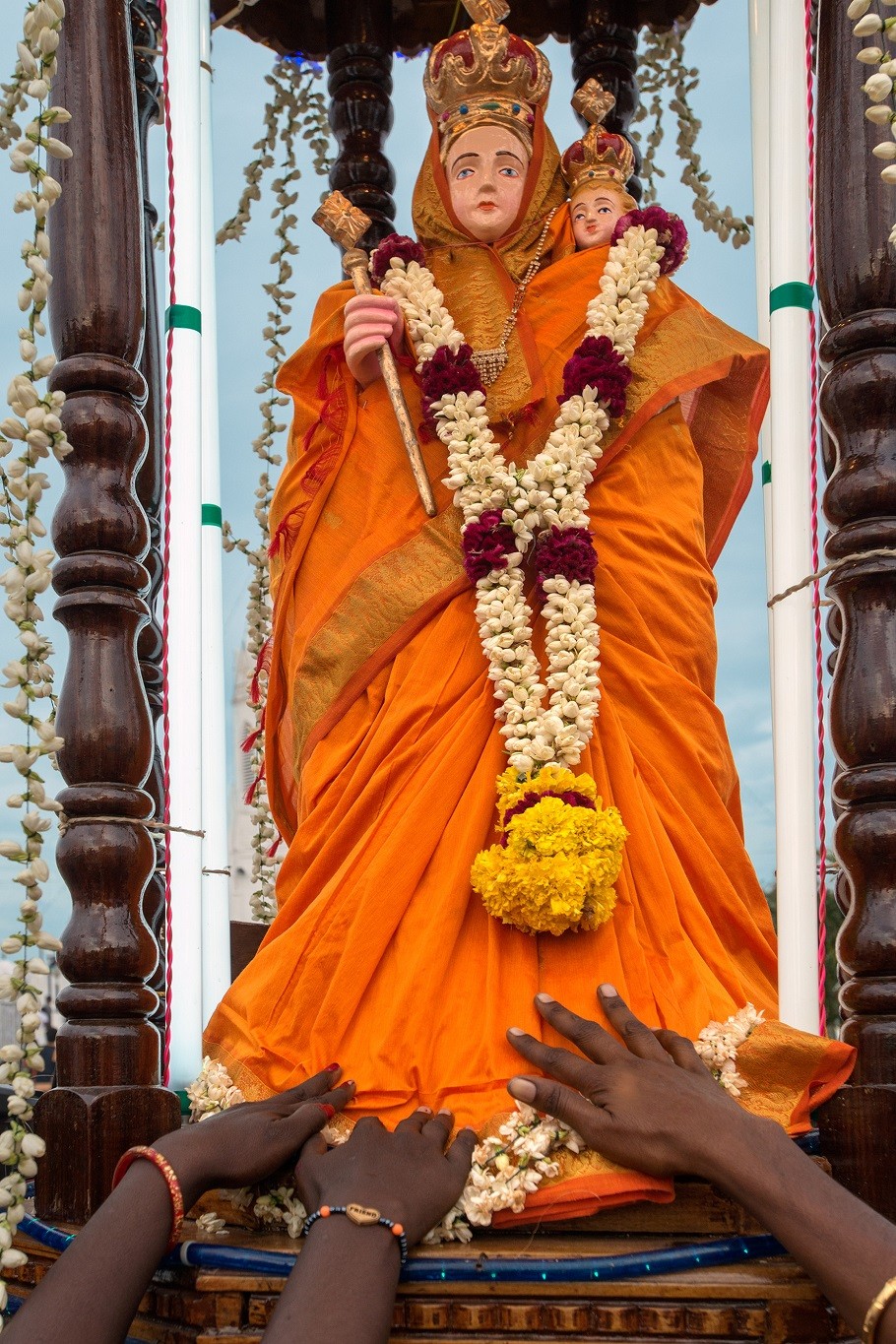 The statue of Oriental Our Lady of Lourdes during the nine day festival of Our Lady of Health, named Velankanni.(Bernard Grismayer/Bernard Grismayer)
The statue of Oriental Our Lady of Lourdes during the nine day festival of Our Lady of Health, named Velankanni.(Bernard Grismayer/Bernard Grismayer)
Grismayer also photographed the nine days surrounding the retreat each year at the end of August and beginning of September on the occasion of the celebration of Our Lady of Health. The festival is named Velanganni, and the venerated statue celebrates the Lourdes of the East.
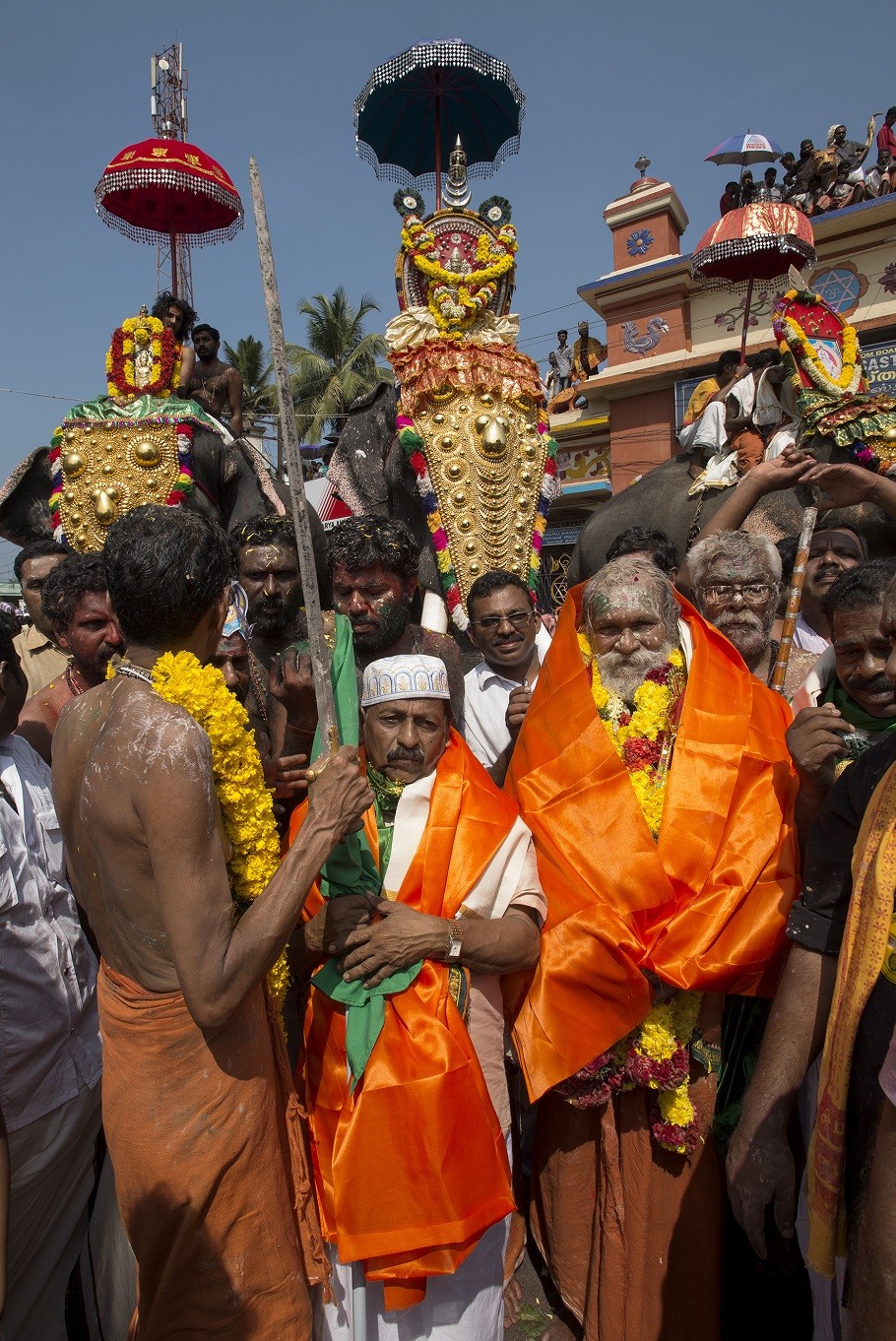 Sabarimalai pilgrimage where Muslim and Hindu dignitaries celebrate the opening of the Ayyapan pilgrimage, also known under the name of Shankaranarayan. Shankara is Shiva and Narayan is Vishnu.(Bernard Grismayer/Bernard Grismayer)
Sabarimalai pilgrimage where Muslim and Hindu dignitaries celebrate the opening of the Ayyapan pilgrimage, also known under the name of Shankaranarayan. Shankara is Shiva and Narayan is Vishnu.(Bernard Grismayer/Bernard Grismayer)
Muslim and Hindu dignitaries celebrate the Sabarmalai, the pilgrimage of Ayyappan, together, also known as Shankaranayana, celebrating the miraculous birth of the son of Shankara (Shiva) and Narayana (Vishnu), that divinity is called Harihara (Hari is Vishnu and Hara is Shiva).
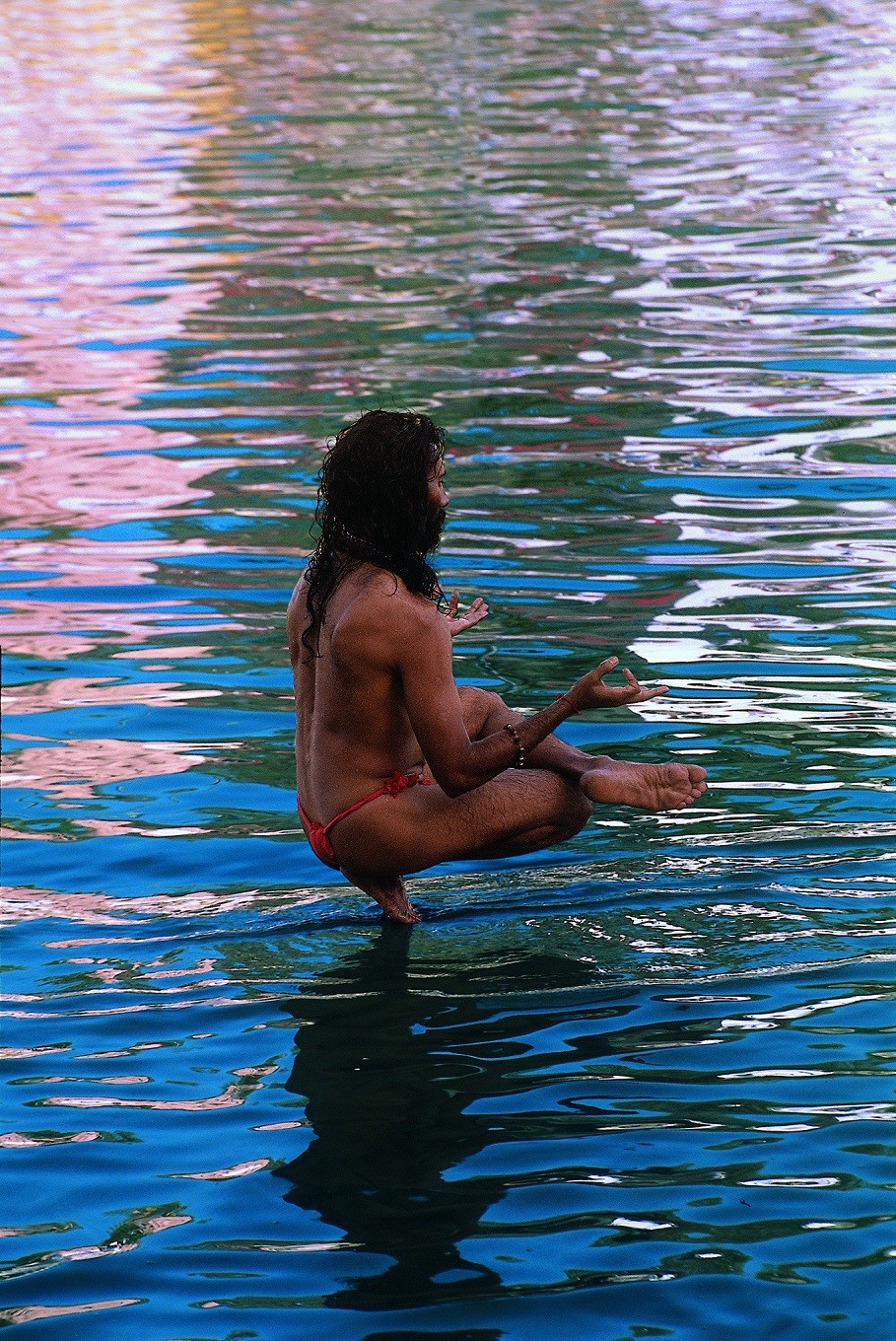 A photo taken by Bernard Grismayer of a ascetic at evening prayers in India.(Bernard Grismayer/Bernard Grismayer)
A photo taken by Bernard Grismayer of a ascetic at evening prayers in India.(Bernard Grismayer/Bernard Grismayer)
Finally, of course, Grismayer followed several Kumbha Mela gatherings, one of which is depicted at Galerie Impressions, where a sadhu performs his evening prayer at Ujiaan on the river Shivra. These gatherings with pilgrims, including thousands of sadhus, ordinary people performing their pilgrimage and spectators, literally turn the scene into a protracted ten day happening with the preparations, frenzied crowds and the aftermath.
The intense way that Bernard lives in Asia reflects in his vivid and colorful photography, although he admits he never dresses like the others, but wears plain white clothes, a more neutral way to observe the passionate actions of piligrims, dancers and actors. He used to travel with a companion who helped watch over his camera equipment and film rolls, but now Grismayer uses digital cameras and travels alone. Remarkably few violent incidents take place during these pilgrimages, he said, but often there are horrendous accidents involving cars, buses, trucks and other means of transportation.
Bernard Grismayer’s latest trip to India, which began on Jan. 1, will take three months. He will follow the Buddhist trail at the Kalachakra ceremony carried out by HH Dalai Lama in Southern India and then capture images of the Tibetan Losar New Year. He wants to explore caves with Buddhist and Hindu carved statues and go right down to Kerala, in southwestern tip of the Indian subcontinent.
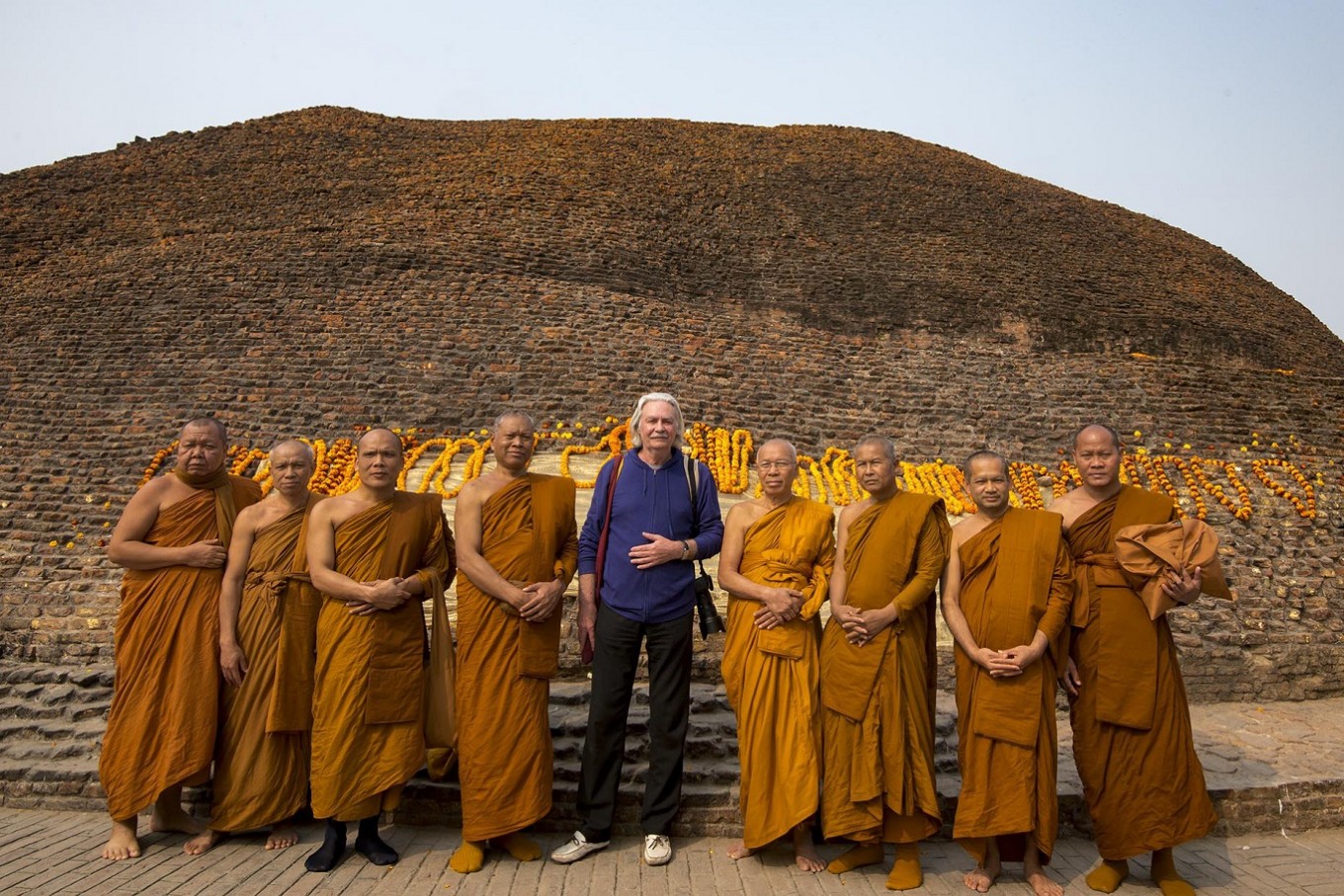 Bernard Grismayer surrounded by a group of Thai monks.(Bernard Grismayer/File)
Bernard Grismayer surrounded by a group of Thai monks.(Bernard Grismayer/File)
When he gets back, we will be treated to new images. Maybe another book, together with several other photographers like the Lumbini UNESCO publication about the birthplace of Lord Buddha, will ensue.
---------------
Interested to write for thejakartapost.com? We are looking for information and opinions from experts in a variety of fields or others with appropriate writing skills. The content must be original on the following topics: lifestyle ( beauty, fashion, food ), entertainment, science & technology, health, parenting, social media, and sports. Send your piece to community@jakpost.com. Click here for more information.

